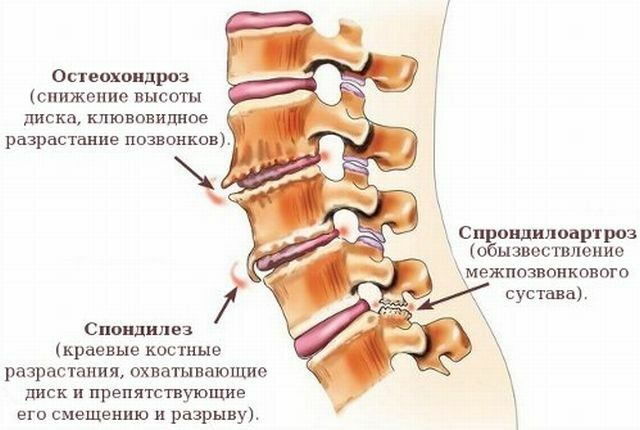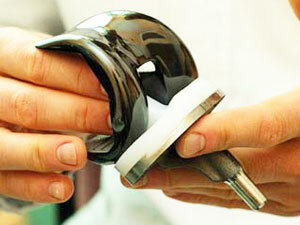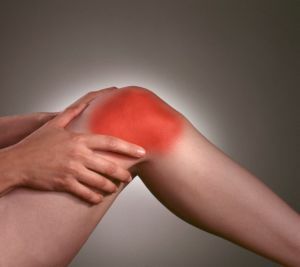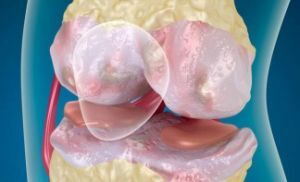 Orthopedists often diagnose patellofemoral arthrosis in the case when the patient is drawn due to pain in the knee joint.
Orthopedists often diagnose patellofemoral arthrosis in the case when the patient is drawn due to pain in the knee joint.
Discomfort, soreness and other unpleasant sensations in the knee, which are irregular, are the main symptoms of the disease.
In the international classification of diseases, pathology is referred to as patellofemoral pain syndrome. Pain precedes normal arthrosis and is easily differentiated by physicians after establishing the causes of pain in the knee joint.
Contents of the article
- Causes of the
- syndrome Degrees of the development of the disease
- Clinical picture
- Diagnostic approach
- Methods of treatment
- Possible complications
- Prevent the disease!
Causes of
Syndrome The most common cause of pain in the knee is the damage to the cartilaginous tissue in the patella.
Cartilages of the knee joint have a property to wear out over time, resulting in a loss of natural cushioning. As a result, due to such a mechanical effect, true arthrosis develops.
In most cases, the pathological changes in the knee joint are initially manifested in the form of patellofemoral syndrome.
Painful sensations are noted in the anterior part of the joint. There is usually no inflammatory process at this stage.
Degrees of development of the disease
Three degrees of the disease are distinguished:
- At the first degree of , the disorder is an unformed disease. In this case, the cause of the syndrome is the usual overstrain or overstrain of the joint.
- If the pain does not disappear after a certain time, or if a relapse caused by a trauma occurs, doctors diagnose the patellofemoral arthrosis of the knee joint of the 2nd degree .This form of the disease is associated with discomfort in the
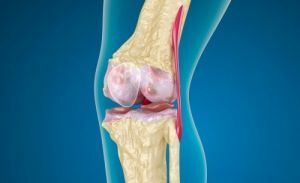 of the anterior part of the knee joint. The patient may complain of acute or prolonged pain, giving up the degree of severity of the pain syndrome. Pain is a dependent phenomenon and appears after excessive stress on the joints during heavy training, after running, frequent descents and climbing stairs, after dragging heavy weights, etc. In a calm state, the pain senses disappear.
of the anterior part of the knee joint. The patient may complain of acute or prolonged pain, giving up the degree of severity of the pain syndrome. Pain is a dependent phenomenon and appears after excessive stress on the joints during heavy training, after running, frequent descents and climbing stairs, after dragging heavy weights, etc. In a calm state, the pain senses disappear. - The third degree of the disease is characterized by dystrophic changes in the cartilaginous tissue. On the X-ray, narrowing of the lumen between the bones of the joint is well observed. With the third degree of , the syndrome of the complex therapy, including the passage of various physiotherapy procedures.
Clinical picture
Patellofemoral syndrome is often the precursor of arthrosis of the knee joint.
The pathological process develops against the background of excessive loads on the joints or is the result of injuries, which often occurs in athletes( runners, skiers, etc.) and elderly people against the background of aging. After the trauma the structure of the joint undergoes changes, because of what the pathology develops.
The main clinical sign is traumatic pains that increase with prolonged walking, climbing stairs, in a position where the person keeps his knees bent for a long time.
Sometimes during movement, the pain syndrome is accompanied by a crunch or a crash.
Diagnostic approach
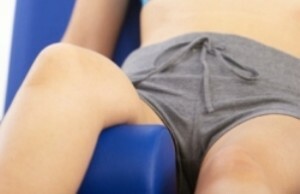 The diagnosis is straightforward. A qualified physician conducts a diagnosis based on the history of the patient, patient complaints and examination of the limbs. The specialist probes the site, which disturbs the patient, as a result of which it is possible to accurately determine the localization of pain.
The diagnosis is straightforward. A qualified physician conducts a diagnosis based on the history of the patient, patient complaints and examination of the limbs. The specialist probes the site, which disturbs the patient, as a result of which it is possible to accurately determine the localization of pain.
If the doctor assumes the presence of other, more dangerous pathological processes with similar symptoms, additional instrumental studies are prescribed:
- magnetic resonance imaging of the knee;
- computed tomography;
- radiograph.
Treatment Methods
A special technique for the treatment of patellofemoral arthrosis has not yet been developed. In some cases, it is enough to temporarily stop training and ease the load on the joints.
If the pain in the knee joint becomes permanent, the doctors resort to the following measures:
- fix the patella with the help of a restorative orthesis or tutor;
- recommend limiting the load on the knee joint;
- is prescribed analgesic and anti-inflammatory drugs.
If the patellofemoral syndrome is a symptom of true arthrosis of the knee joint, the patient is prescribed 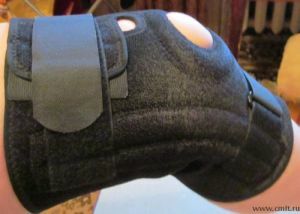 -supporting therapy with the joint use of non-steroidal anti-inflammatory drugs and glucocorticosteroids for direct administration to the affected area.
-supporting therapy with the joint use of non-steroidal anti-inflammatory drugs and glucocorticosteroids for direct administration to the affected area.
In some cases, the disorder begins to progress, resulting in severe pathologies in the form of all kinds of deformities( eg, severe arthrosis).
In this situation, therapeutic treatment of degenerative-dystrophic processes is carried out.
In the presence of constant painful sensations, the orthopedist can make a scheme of treatment with the use of chondroprotectors for intraarticular administration.
If treatment does not give proper results for some time, the therapy used for the treatment of arthrosis of the knee joint is indicated:
- reception of analgesic non-steroidal anti-inflammatory drugs;
- use of special orthopedic devices that minimize the load on the knee joint;
- knitting of fixing bandages;
- exercises therapeutic gymnastics to strengthen the muscles of the joint.
In severe and neglected forms, surgical treatment is performed. Elimination of damaged cartilage with an arthroscope is called arthroscopy.
Surgical procedure is as follows: a small incision is made in the affected area, through which an arthroscope is inserted, after which the surgeon removes pathologically altered material.
Possible complications of
Syndrome causes difficulties in the performance of daily physical activities( for example, climbing the stairs), reduces the quality of life of the patient.
You can prevent disease!
Preventive measures aimed at preventing the development of patellofemoral syndrome are as follows:
- Leg muscles training .Advanced musculature increases the stability of the knee joint.

- Body weight control .Excess weight is an additional burden on the lower limbs.
- Workout of knee joints before physical exertion.
- Purchase of quality and comfortable shoes , which will provide good cushioning and will cause discomfort when worn. With flat feet, it is better to buy orthopedic shoes, or use special orthopedic insoles.
Violation is not life threatening, but can significantly reduce its quality. At the first negative signs it is necessary to address to the doctor to exclude more serious diagnosis.

